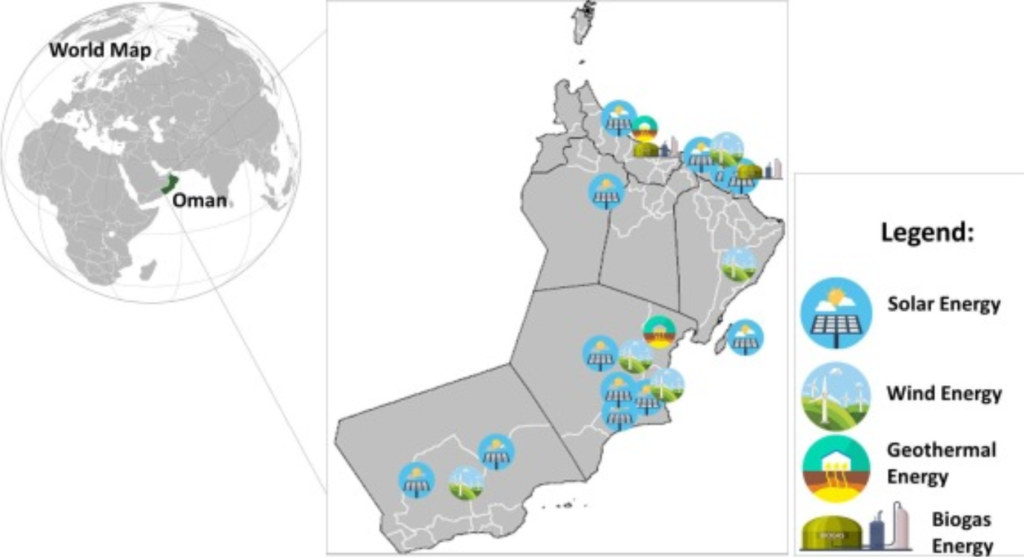A review of recent renewable energy status and potentials in Oman
ِA study published in Sustainable Energy Technologies and Assessments journal revealed the recent renewable energy status and potentials in Oman.
This study aimed to assess renewable production and consumption levels including recent renewable energy (solar, wind, biogas, and geothermal) plans and projects in Oman. In doing so, various renewable energy datasets were acquired mostly from government agencies, international organizations, and scientific databases. The study results showed that solar energy has been the only source of renewable energy production levels in Oman since 2017, while other forms have not been adequately explored. It was also found that, during recent years, the country has unveiled ambitious renewable production plans leading to an investment in several megawatts (MW) of solar power plants, wind farms, and biogas energy projects across the country. Oman’s current renewable energy share target is 30% by 2030 with this increasing to ∼35–39% by 2040. Offshore power has also been found to produce ∼1.3 more energy than land/onshore-based wind energy sources. However, the few existing geothermal reservoirs, which are mainly low (70–90 ℃) and medium (100–174 ℃) enthalpy reservoirs, have not been explored and no projects have yet been initiated. Thus, more innovative R&D research projects and exploration activities are needed to discover other untapped geothermal reservoirs.
Oman has great potential for becoming one of the leading renewable energy producers in the Middle East. However, clear and comprehensive renewable policies and R&D programs in terms of explorations, production, usage, storage, and supplies, need to be considered to help realize these goals.
The main results of this study are illustrated in the paper “A review of recent renewable energy status and potentials in Oman” published in Sustainable Energy Technologies and Assessments.

